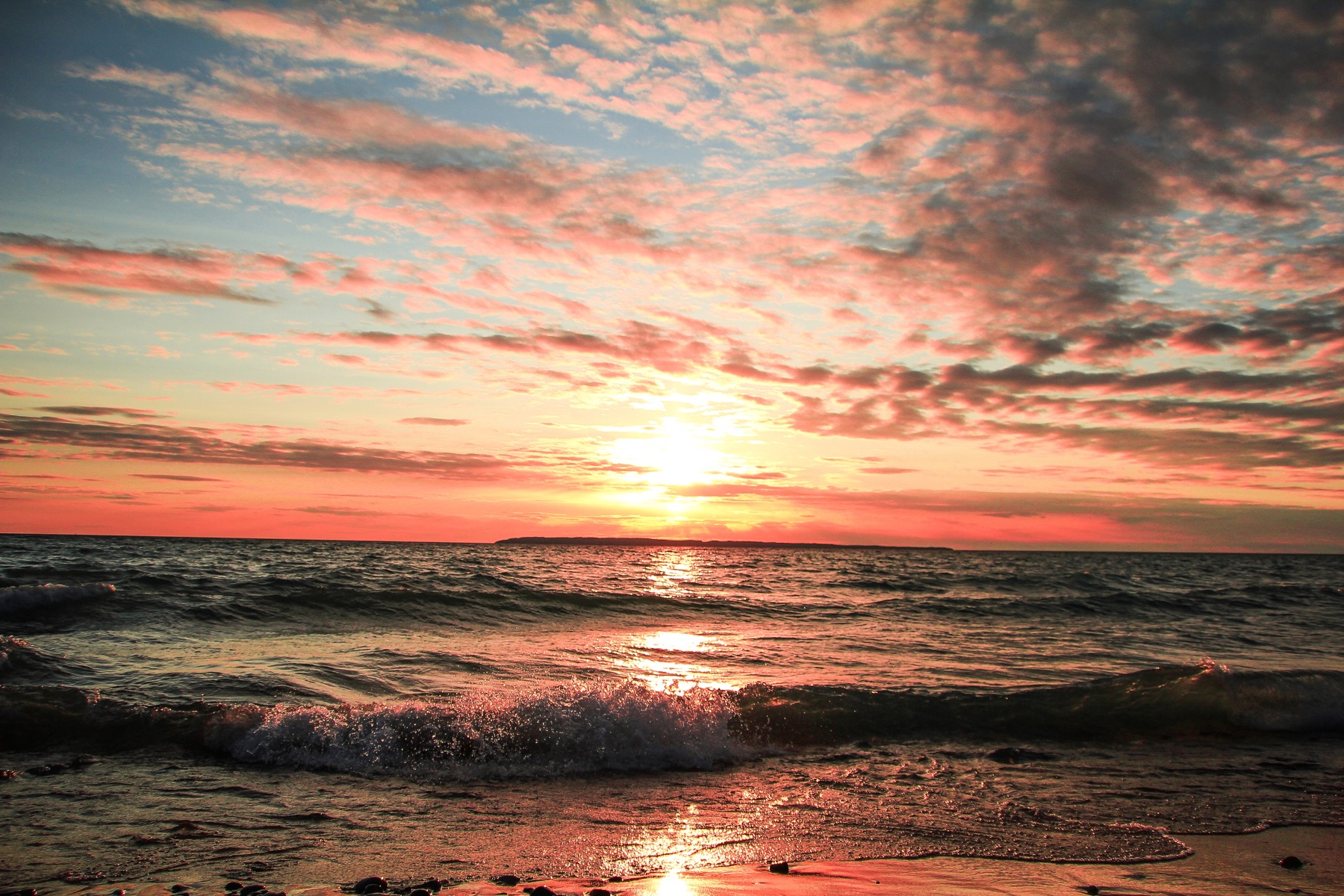If you believe, as we do, that fresh water is the world’s most valuable resource, then there’s no better place to be for the next half-century than right here in the U.S. Midwest.
The Great Lakes are the world’s largest reservoir of fresh water. According to a speculative article in Chicago magazine last May, our proximity to this unique resource could make Chicago a thriving hub of renewable energy technology over the next 50 years, while the region evolves into “the Saudi Arabia of freshwater.”
For that dream to become a reality, however, we have to take care of our lakes.
The Great Lakes have challenges. Architects, designers and engineers who create facilities in the region should be aware of these challenges — and do what they can to alleviate them.
This list is an incomplete summary of issues facing the Great Lakes, with links to sources of more in-depth information:
Challenge: Global climate change
Rising temperatures could lower water levels in the Great Lakes, threatening fish and wildlife and intensifying harmful algal blooms while reducing the amount of water available for human use.
What you can do: Design facilities to use less energy and more sustainable energy sources. Reducing fossil fuel consumption is the most comprehensive way to counter global climate change.
You can also specify carbon-neutral building products to ensure your materials have no negative environmental impact.
Challenge: Habitat destruction
Great Lakes wetlands are home to hundreds of threatened and endangered species, and they also filter pollutants before they impact lake water and aquifers. Yet the Great Lakes basin has lost more than half of its wetlands, with declines as sharp as 95% in some coastal areas.
What you can do: If possible, build wetlands into exterior landscapes, and work with local, state and federal officials to protect wetlands near areas where new facilities are planned.
Challenge: Nonpoint source pollution
The leading cause of U.S. water quality problems isn’t pollutants being released directly into waterways — it’s excess agricultural and urban pollutants carried by rain or snowmelt and deposited in waterways. Nonpoint source pollution damages Great Lakes drinking water supplies, recreation, fisheries and wildlife.
What you can do: Design your next facility with a stormwater-sustainable roof that collects and retains stormwater where it falls. This allows soil to slowly filter out pollutants before they reach aquifers and waterways.
Challenge: Algal blooms
A massive bloom of blue-green algae in Lake Erie in 2014 endangered Toledo, Ohio’s drinking water. While many blooms are natural and harmless, harmful algal blooms can cause fish kills and create conditions that are dangerous to human and aquatic life.
What you can do: Reduce runoff and protect wetlands. Phosphates from household detergents and farm fertilizers contribute to bigger, more harmful blooms, and wetlands are natural filters that keep phosphates out of waterways.
Challenge: Invasive species
Since zebra mussels arrived decades ago in some freighter’s ballast tank, they’ve permanently altered the ecological balance of the Great Lakes — and cost businesses millions in removal costs. But they’re just one of more than 180 foreign species that have found homes in the Great Lakes, including two confirmed just this month.
What you can do: Unfortunately, there’s not much architects, designers and engineers can do about invasive species other than to support organizations that are working to keep new ones out.
Challenge: Water withdrawals and diversions
Today, the Great Lakes region enjoys relatively easy access to the world’s largest supply of fresh water, while many other areas of the U.S. and the world endure water shortages and drought-like conditions.
While a negligible amount of water is currently diverted from the Great Lakes to other regions via pipelines or canals, that could change if conditions worsen elsewhere. Only 1% of the region’s water is replenished naturally every year, so large-scale diversions would drastically impact the Great Lakes ecosystems.
What you can do: Specify water-saving flushometers, faucets, urinals and toilets for every commercial restroom you create. Reducing water use everywhere you can today will help reduce the need to divert water from the Great Lakes in the future.
From the 1906 invention of the Royal® Flushometer to today’s automatic fixtures, Sloan’s innovations have saved building owners billions of gallons of water. Want to know more? Talk to Sloan!
Stay Up to Date
Sign up for the Sloan blog to receive information on the latest trends in commercial building, technology advancements and product updates. It's the leading source of industry news for architects, designers, engineers and contractors.
